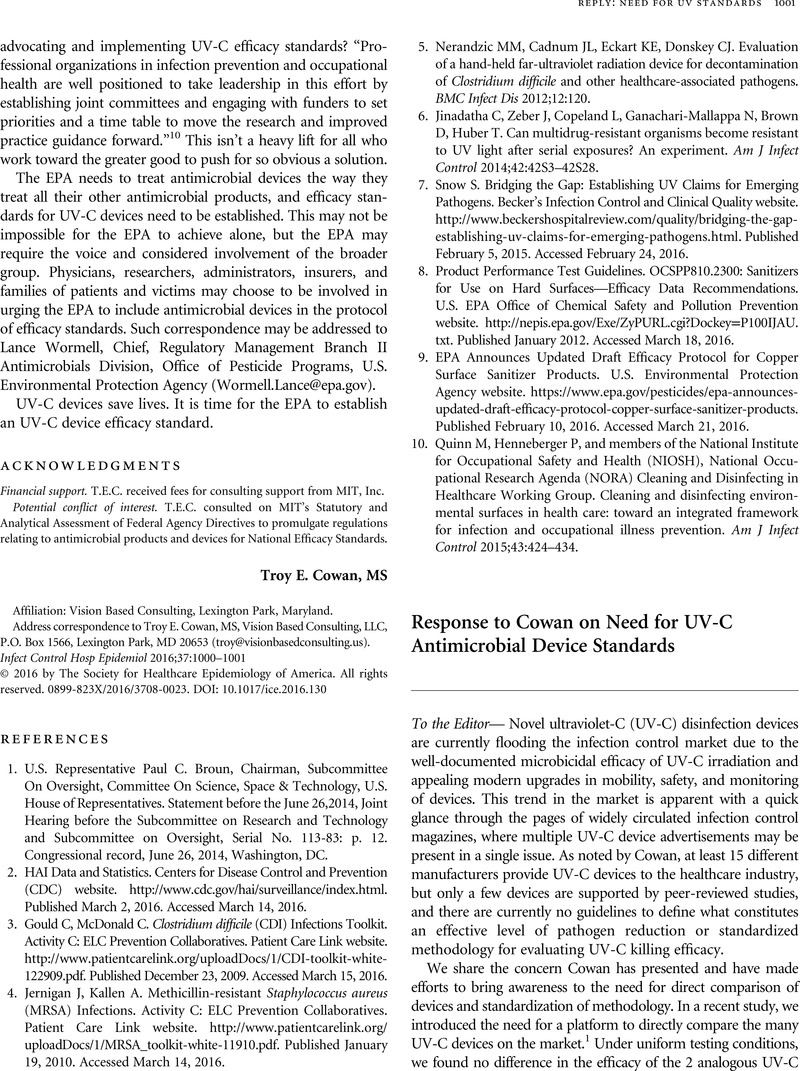Crossref Citations
This article has been cited by the following publications. This list is generated based on data provided by Crossref.
Spencer, Maureen
Vignari, Michelle
Bryce, Elizabeth
Johnson, Helen Boehm
Fauerbach, Loretta
and
Graham, Denise
2017.
A model for choosing an automated ultraviolet-C disinfection system and building a case for the C-suite: Two case reports.
American Journal of Infection Control,
Vol. 45,
Issue. 3,
p.
288.
Boyce, John M.
and
Donskey, Curtis J.
2019.
Understanding ultraviolet light surface decontamination in hospital rooms: A primer.
Infection Control & Hospital Epidemiology,
Vol. 40,
Issue. 9,
p.
1030.



